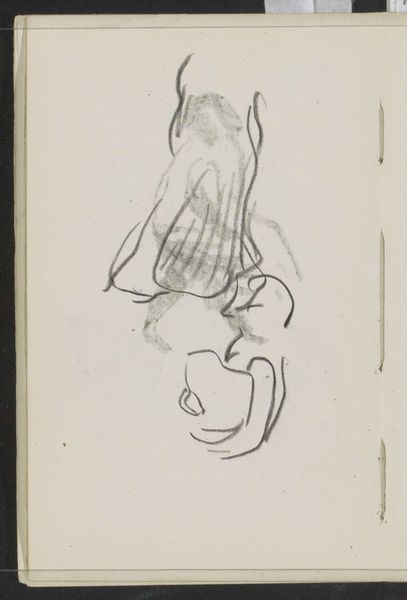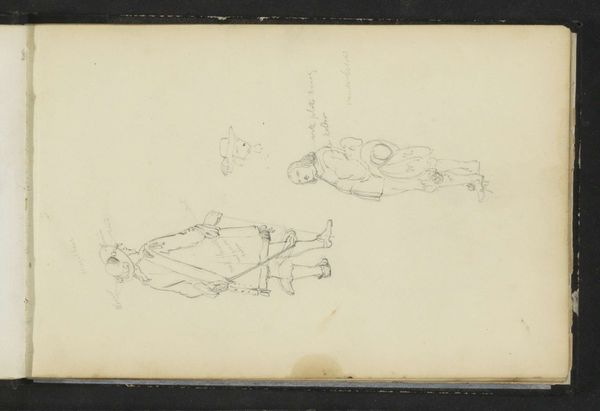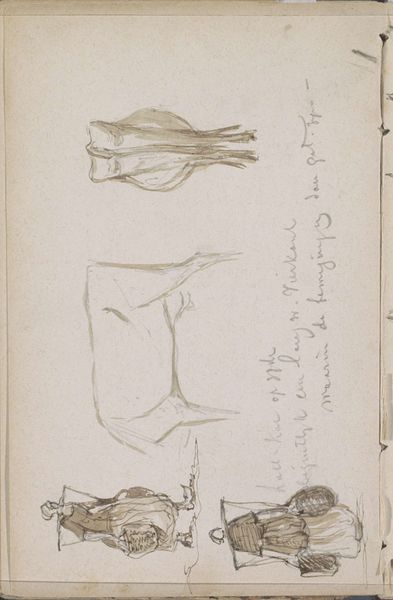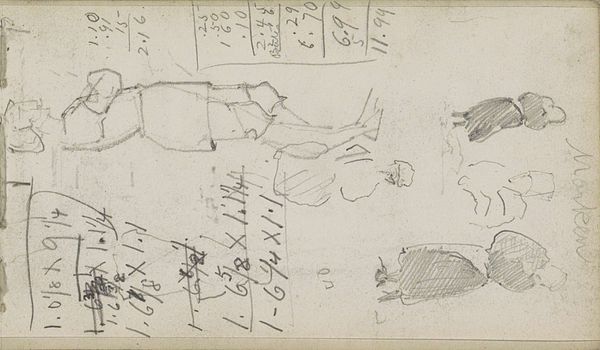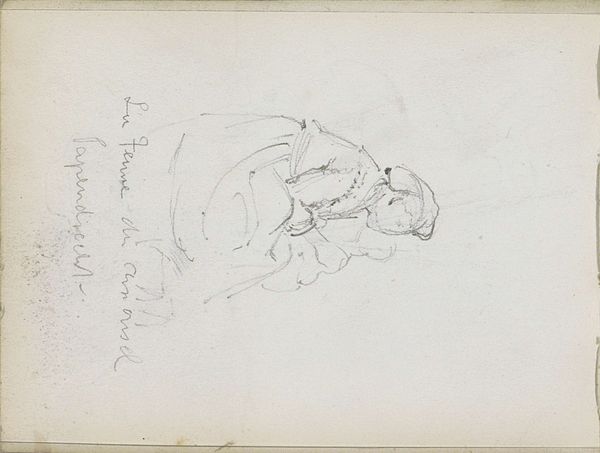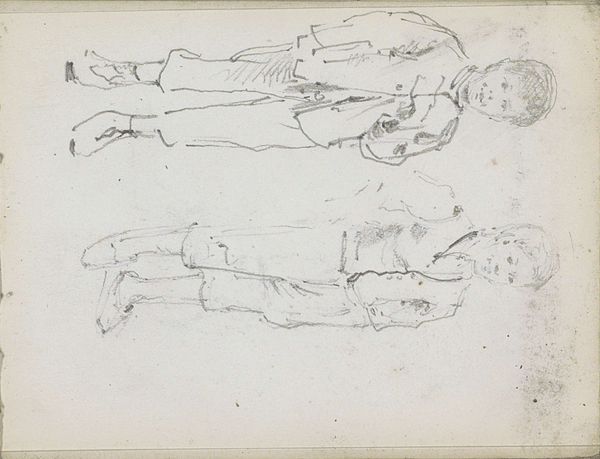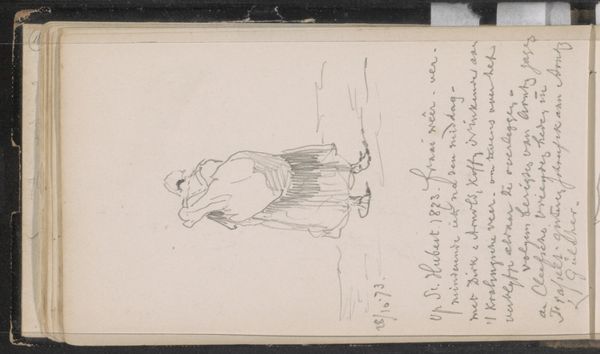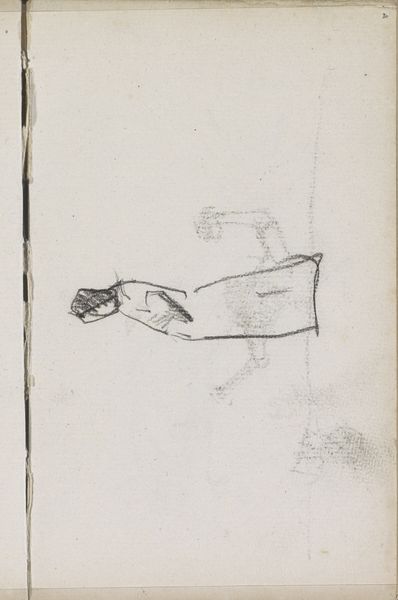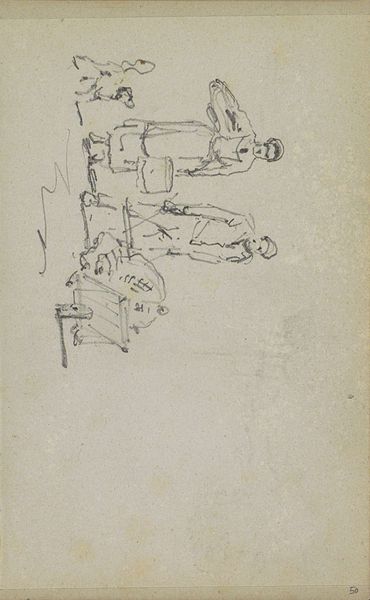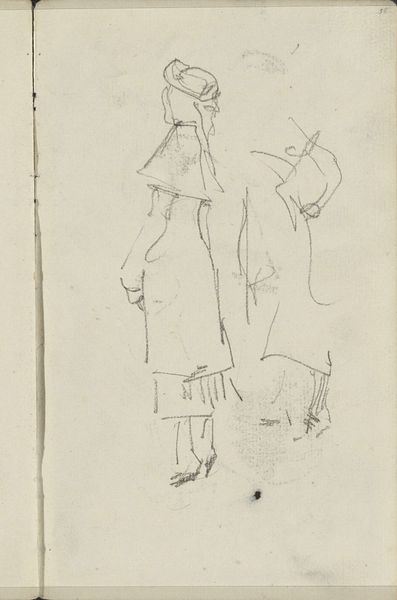
Copyright: Rijks Museum: Open Domain
Curator: Here we have "Two Men in Tyrolean Costume," a drawing in ink on paper by Johannes Tavenraat, dating from around 1858-1859. It is currently held at the Rijksmuseum. Editor: It feels very informal, a quick sketch, but the detail in their clothing is captivating. What can we unpack in terms of form and structure here? Curator: Indeed. Observe how Tavenraat utilizes line to define form, specifically noting its varied thickness to create shadow and volume. Do you see how the darker lines on the right side of the figures imply a light source from the left, thus establishing a sense of depth despite the drawing's two-dimensionality? Editor: Yes, and I also see how the textures are suggested with all the little dashes that delineate shadow and light. It appears spontaneous yet deliberate. What about the negative space? Curator: Precisely. The strategic placement of the figures and the white space surrounding them enhances the drawing's immediacy. The lines of script also adds another layer. Notice, too, how the contrast between the rough sketching of the costumes and the relatively smoother treatment of the exposed skin draws your attention to those areas. This contrast itself becomes a focal point. Editor: So the intentional variations in line and texture create both depth and a hierarchy of visual interest, it is all embedded in the materiality? Curator: Precisely. The beauty lies not necessarily in subject, but in how these formal elements interplay to create a cohesive and visually engaging image. Editor: I never really noticed all that on the first view. Now, I am interested in similar sketches by the same artist! Curator: That is the goal – that our understanding will evolve.
Comments
No comments
Be the first to comment and join the conversation on the ultimate creative platform.
